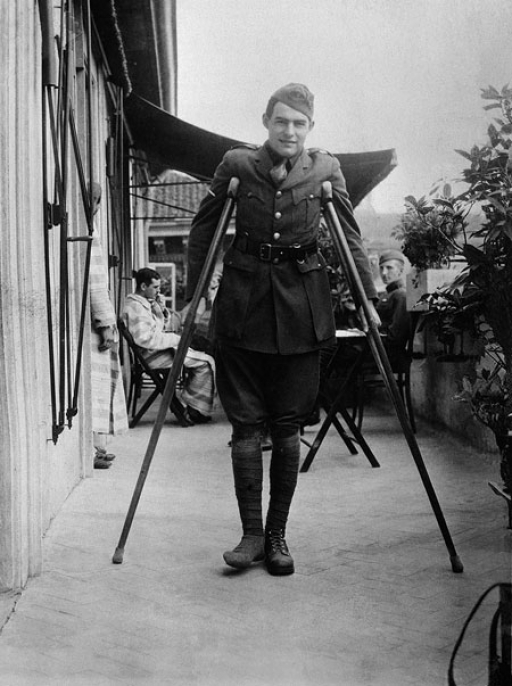An exhibition about the work of Ernest Hemingway has opened in New York. Centenary News writer Jillian Davidson visited the exhibition, and has sent this report.
Ernest Hemingway: Between Two Wars
Organized in partnership with the John F. Kennedy Presidential Library and Museum, the exhibition includes multiple drafts of Hemingway’s earliest short stories, notebooks, heavily revised manuscripts and typescripts of his major novels—The Sun Also Rises, A Farewell to Arms, and For Whom the Bell Tolls.
Currently on display at the Morgan Library and Museum in Manhattan (until January 31, 2016), it is described by the organisers as the first major exhibition devoted to the works of Hemingway, and focuses on the American author’s most creative period.
Although Hemingway’s participation in World War One was brief, the exhibition shows that its impact on his literary career was powerful. As Hemingway boasted to F. Scott Fitzgerald, “The reason you are so sore you missed the war is because the war is the best subject of all. It grounds the maximum of material and speeds up the action and brings out all sorts of stuff that normally you have to wait a lifetime to get.”
Amongst its photos, memorabilia, manuscripts and books, the exhibit displays photos of Hemingway serving in the American Red Cross ambulance in Italy, June 1918, of Hemingway with Agnes Von Kurowsky (the American nurse who inspired the character Catherine Barkley in A Farewell to Arms) and of Hemingway convalescing at the American Red Cross hospital in Milan 1918. The exhibit explains that 227 shrapnel fragments needed to be removed from Hemingway’s legs. It also presents his Croce al meriito di guerra, his War Merit Cross.
On view is Hemingway’s original Nick Adams story. While convalescing in 1918, Hemingway wrote on American Red Cross stationery his first fictional account of his wartime experience.
At the core of the exhibit, is Hemingway’s World War One novel, A Farewell to Arms. There are the first two pages of his first draft in 1928 and Fitzgerald’s editorial suggestions, including his comment: “a beautiful book it is!” Underneath this, Hemingway scribbled, “kiss my ass”!
In order to get “the words right,” Hemingway wrote 47 discrete endings for this novel; 4 of which are shown. A panel stands atop these manuscripts with the handwritten quote of one of these endings enlarged: “That is all there is to the story. Catherine died and you will die and I will die and that is all I can promise you.”
An exceptionally rare advance review copy of the first edition of A Farewell, in its manila wrappers and glassine dust jacket is also exhibited. Scribner Press printed over 101, 675 copies through 7 printings in 1929.
According to the exhibit’s narrative, at the time of Hemingway’s death in 1961, 1,383,000 copies of A Farewell had been sold.
Photo: Ernest Hemingway, Milan, 1918. Copyright Ernest Hemingway Photograph Collection. John F. Kennedy Presidential Library and Museum.
